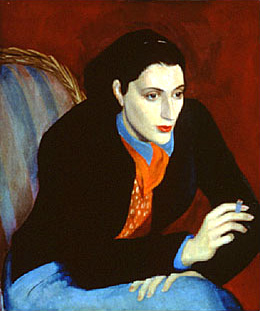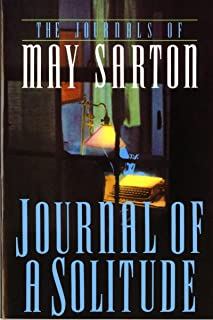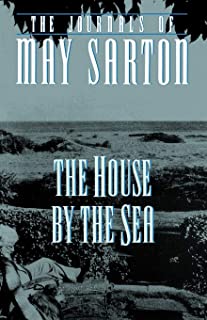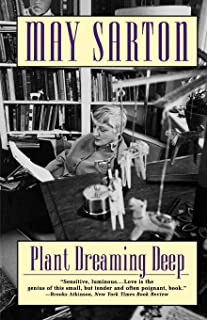- Read
- On The Writer
- On The Writing
- Favorite Quotes
- Photos
- Film and Audio
- Bibliography
- News
- Order Books
May Sarton by Eleanor Sullo
May Sarton wrote poetry and journals into her eighties and remained a strong vivid voice for living life to the fullest.May Sarton came into her gracious old age naturally, virtually unchanged but only ripened in the essence of who she was. Her tale can be inspiration to any woman longing to make it on her own.
Born in Wondelgem, Belgium in 1912, daughter of George Sarton, historian of science, and Eleanor Mabel, artist and designer. Her European roots, and the effects of her parents' energy, talents and determination, influenced Sarton her entire life, although the family moved to the United States to escape the encroaching Nazis in 1916. Having attended a private and progressive children's school, Shady Hill, founded and run by a poetry teacher, May graduated from Cambridge High and Latin School in 1929, already knowing her life belonged to her lyric poetry and to form, in particular. Although she didn't believe her teacher Florence Evans, who expressed her faith in Sarton's genius, May felt she would become a writer by sheer fore of will and her innate intelligence, as well as her love of words.
For a while, though, to the dismay of her father when she eschewed a scholarship to Vassar, Sarton lived out her love of words through work in the theatre. Enamored of the stage, fascinated especially by Hamlet and Chekov, she began acting out of school, although she said of the theatre, "Being in the theatre is like having an endless devouring affair with a second-rate person." She joined Eva Le Gallienne's Civic Repertory Theatre in New York, developing connections to people in the theatre, who fostered her intellectual and artistic yearnings all her life. Eventually she formed her own theatre, the Associated Actors Theatre, which failed financially in 1935, victim to the Depression.
From then on, Sarton's life was devoted to her writing, and for the next nearly seventy years she produced tens of volumes of poetry, novels, memoirs and essays, eventually earning herself a preeminent place in American letters. But Sarton's climb to literary acclaim was not an easy one, although her talent was recognized early, and honed by frequent trips to Europe, where she met intellectual and artistic giants who would foster her creativity. She knew Virginia Woolf, Elizabeth Bowen, Dame Edith Sitwell, and Julian and Juliette Huxley, the last of whom she loved desperately all her life.
After the publication of two impressive volumes of poetry, Encounter in April and Inner Landscape, she began what was to become an annual lecture tour of colleges throughout the United States. During the forties she worked at Pearl Buck's East and West Society of New York, writing scripts for the U.S. Was Information Office. She also continued to write poetry and novels, while becoming acquainted with other prominent writers and artists, like Hilda Doolittle, W. H. Auden and Stephen Spender.
During the fifties Sarton lost her mother and Marie Closset, a dear friend from Belgium with whom she had lived for a year. At the same time she met Judith Matlock, with whom she lived for many years, and a writer herself. Sarton only finally saw Matlock's writings once her former partner had died, four decades later, and Sarton herself gathered them and praised them in a work of her own. In the late fifties, her novel Faithful Are the Wounds and In Time for Air, a volume of poems, were both nominated for National Book Awards. Although neither won, In Time for Air is still considered one of her finest works.
When Sarton's father died she sold the family home in Cambridge Massachusetts, where he had lectured at Harvard, and bought an old house in New Hampshire. There her love of the land and gardens came into bloom. Around this time she came out about her sexuality, particularly in the book, Mrs. Stevens Hears the Mermaids Singing, and was plagued forever after by being labeled a "lesbian writer," which label she felt always obscured her more general proficiency and limited the scope of others' understanding of her ouevre. She continued to lecture at colleges and after her landmark memoir, Plant Dreaming Deep appeared, became more important to the feminist circle of appreciation in academia and elsewhere, and much more in demand as a lecturer and important figure in American letters.
In 111973 Sarton sold her home in New Hampshire and moved to York, Maine, to Wild Knoll, a house on the ocean, where she lived and wrote, and accepted visitors for the rest of her life. But it was not a life of ease or resting on her laurels. May Sarton continued to publish and grow in her art. When Constance Hunting's work on Sarton, May Sarton: Woman and Poet appeared in 1982, her work finally began to receive the critical acclaim she had deserved for so long.
Meanwhile, she produced one of her most loved and well-known works, Journal of a Solitude, which soon became a key text in Women's Studies courses, encouraging generations of women and especially women writers to write from who and where they were. At the same time, her novel, As We Are Now, made an impact on society by its depiction of the treatment of the elderly. Two children's books, and a collection of her earlier work along with new poems, called May Sarton: Collected Poems 1930-1973 made a profound effect on by bringing her early work to a whole new generation of writers.
The late seventies continued to be a fertile and rich period for Sarton intellectually and in her productivity. Her letters, poems, memoirs and novels continued to be produced and to find waiting audiences. While highly readable, her poetry especially expressed a complex and rich voice that never lost its profound spirituality. Although Sarton believed desperately in form, almost form before matter, and was deeply conscious of the need to be disciplined and contained in her writing, she also began to produce free form poems, and seeking new literary challenges as she aged.
A well-known film, World of Light: A Portrait of May Sarton, produced by Martha Wheelock and Marita Simpson, friends and colleagues, gives an authentic and compelling picture of the writer on her home turf, on the Maine coast. In the film, May Sarton discusses her life, her work, her vision and her muses. The film covers the important themes like love, solitude, poetry and the natural world deftly. When it was completed, May Sarton began one of the most difficult battles of her life, that with breast cancer. Later s stroke, and other physical ailments, began to plague her older years. But they never accomplished the silencing of May Sarton until she was into her eighties.
In her late journals, At Seventy, Endgame: A Journal of the Seventy-Ninth Year, and Encore: A Journal of the Eightieth Year, are powerful reads, reflecting the inner strength and vision that kept this amazing poet publishing until her death and even posthumously. Her deep and abiding love of gardening and flowers, her appreciation of good friends, and her need to record her life as she struggles with setbacks and new hope, abound, particularly in the book published after her death, At Eighty-Two A Journal.
Proof of May Sarton's affect on her readers, and the extent of her influence are shown in the works continuing to be written about her and the fact that over 40 of her own works that continue in print. A beautiful volume, a book of her letters to Juliette Huxley recently gathered by friend and helper Susan Sherman, Dear Juliet, has recently been published, revealing the depths and wonders of this unusual and exemplary woman of American letters.
Source: https://nvnv.essortment.com/wherecanilear_rlnr.htm





